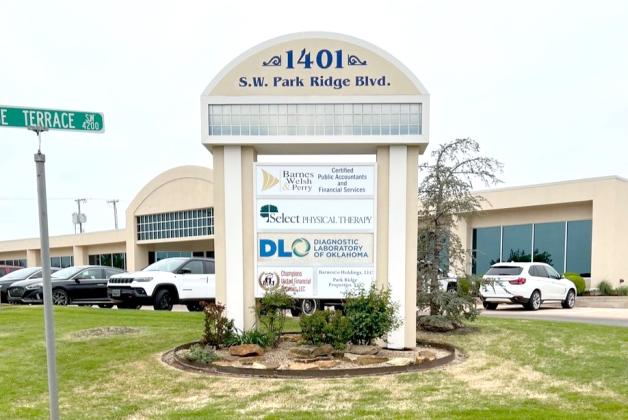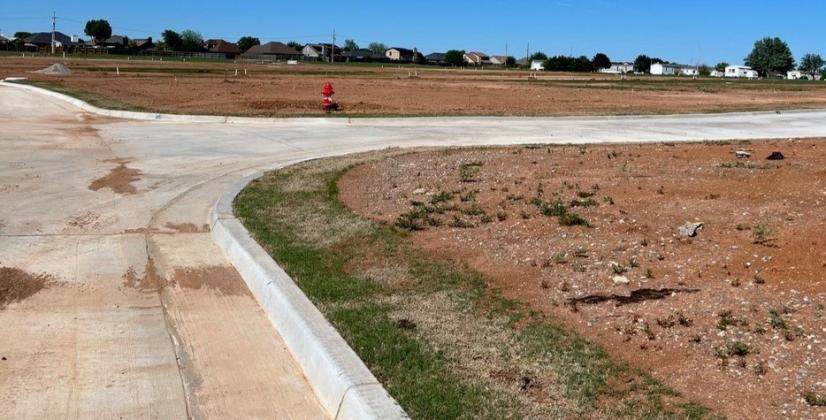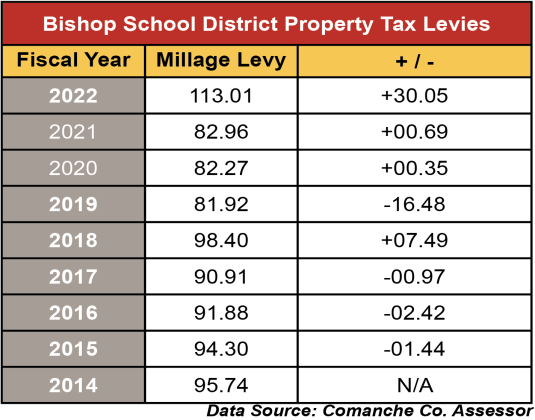American colonists opted to break away from their mother country and dared to wage war against what was then the mightiest military on the planet, in no small measure because of “taxation without representation.”
That phrase describes a situation in which an individual is required to pay taxes to a unit of government but is denied a voice in that governmental unit’s policies. Nearly 250 years later, that situation still exists in Oklahoma, to a limited degree.
CPA William “Beau” Barnes is the co-owner of a commercial office building in the Bishop School District south of Lawton. However, because Barnes lives in Cache he was not allowed to vote in Bishop’s $8.125 million school bond issue last year.
That bond issue raised Barnes’s property taxes from $14,457 to $20,679, an increase of $6,222 – an extra $518.50 per month.
Besides the hefty tax bite, what also aggravated Barnes was the low voter turnout for the election. However, the meager participation rate was not unusual; history has shown that typically only a fraction of eligible voters take the time to cast ballots in local sales tax and bond issue elections.
Bishop School submitted a $7.895 million middle-school bond issue to district voters on May 11, 2021. It attracted 76 voters and although it was approved by a majority of them, 43-33, it failed to garner the 60% approval rate needed to pass a school bond proposition.
A revised $8.125 million proposal was submitted to voters nine months later, on Feb. 8, 2022. That measure attracted 117 voters and passed by a vote of 73-44, a margin of 62.39% to 37.61%.
The bonds are to be retired over a 10-year period. They will be sold in a series; the first tranche totaled $930,000 and bore an interest rate of 1.55%, Supt. Howard Hampton said.
“I didn’t have a say-so” in either of those two bond elections, “even though my ad valorem taxes went up 43%,” Barnes complained.
His 10,000 square-foot building is occupied by the CPA firm he used to own, along with Diagnostic Laboratory of Oklahoma, a physical therapy firm, and a financial services/insurance company. His business partner owns two nearby buildings and her property taxes increased by 43%, too, Barnes said.
“I contacted my state legislator, Rep. Daniel Pae” (R-Lawton), said Barnes. “He told me, ‘There’s nothing I can do for you.’” Meanwhile, “My property taxes go up 5% every year, like clockwork,” Barnes said. “If my property is going to be taxed to pay off a debt, I should be able to vote on it,” he asserted.
Misha Mohr, public information officer for the State Election Board, pointed to a provision in Title 26 of the state statutes which decrees: “To be eligible to vote in a school district election or a technology center school district election, a person must be registered with the county election board at an address located within the geographical boundaries of the district.”
Barnes has his building for sale.
Bishop School District enrollment increasing
Proceeds from the Bishop school bond issue were to be used to construct a 20,000 square-foot middle school, but the bids “came in substantially over budget, by approximately $2 million,” Hampton informed school district patrons in a letter dated March 10, 2023.
Besides the increase in the cost of construction materials, the school building’s foundation was projected to cost “about $1 million more than we anticipated,” Hampton told Southwest Ledger. “We needed to do about eight feet of select fill and needed to extend support piers down about 30 feet.”
Consequently, the size of the building was scaled back to 15,000 square feet and Bishop School District applied for a $2.5 million grant from the Federal Emergency Management Agency to pay for construction of a 5,000 square-foot storm shelter “that can double as classrooms,” Hampton wrote. The storm shelter/classrooms “will be added onto the north end” of the middle school building, he said.
An architect is “working on the design revisions” and school officials “should receive the revised documents” soon, Hampton related in his letter.
FEMA “ran out of money” in the current funding cycle, so Bishop School officials will reapply for the grant, Hampton told the Ledger on April 27. “If and when it’s funded,” the 5,000 additional square feet will encompass four classrooms, he said.
“We will start advertising for bids” on the main building in May and hope to start construction in June, Hampton said. Construction is expected to take approximately 12 months to complete, he said. “We’re about a year behind our original schedule.”
The middle school will be built on land “directly across Sheridan Road” that the district bought in 2017 and 2019, voters were told prior to the election last year.
The new building is intended to accommodate two new grades, 7 and 8, as well as Bishop sixth graders. The building “will provide these students an opportunity to attend school in the Bishop School District throughout their middle-school grades,” district patrons were told prior to the election last year.
“Transitioning the 6th grade students to the new middle school will free up valuable space at the elementary site. Additionally, the district will employ an art and music teacher to be shared by elementary and middle school students.”
The new school building is needed because “increasing student enrollment” is straining capacity at the elementary school, voters were told.
Enrollment this year in Bishop School is “about 580 students” in pre-kindergarten through grade 6, Hampton said. He estimates enrollment will increase by perhaps 100 to 150 students when the new building opens and grades 7 and 8 are added.
Bishop School enrollment totaled 530 students a decade ago, in school year 2011-12, and had climbed to 564 five years later, in school year 2016-17, Oklahoma State Department of Education records reflect.
Although the number of voters in the school district is unclear, the district has “about 1,800 taxable entities,” Hampton said.
Bishop School District mill levies explained
According to the Comanche County Assessor’s Office, the new millage rate in the Bishop School District is 113.01 mills. Of that millage, 70.84 mills are devoted to operation of the school and include:
• 35.44 mills for the district’s General Fund.
• 5.06 mills for the district’s Building Fund.
• 30.34 (or $30.34 per $1,000 of assessed valuation) for the Sinking Fund to pay off the 10-year bonds. (The Bishop district’s previous bond issue, for $1.1 million, was approved in 2010 and was paid off in 2019.)
The other 42.17 mills that Bishop School District residents pay in property taxes support city and county government, schools in the county, and the Great Plains Technology Center:
• 10.23 mills to help finance Comanche County government.
• 2.56 mills to support the Comanche County Health Department.
• 4.09 mills for the common education fund.
• 10.04 mills for a sinking fund to retire City of Lawton bonds.
• 5.02 mills for the Great Plains Career Tech.
• 10.23 mills for the vo-tech school’s General Fund.
The total assessed valuation of real property in the Bishop School District in Fiscal Year 2021-22 was $15,457,043, which produced $626,011 in tax revenue for the school.
For FY 2022-23, the assessed value of all real property in the district was set at $16,651,221, an increase of $1.194 million from the year before. That valuation produced $1,094,977 in tax revenue for Bishop School; most, if not all, of the extra $468,966 was earmarked for the school’s sinking fund.
The ‘sticker shock’ some district property owners experienced this year is because Bishop School hasn’t had a bond issue payment for the last three years, Hampton said.




